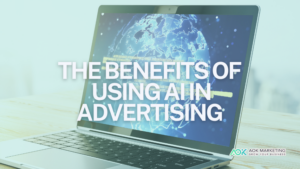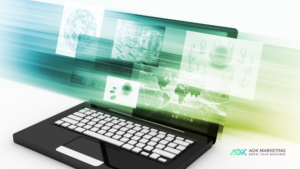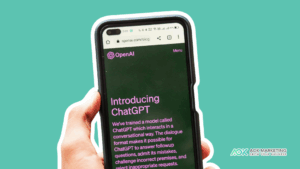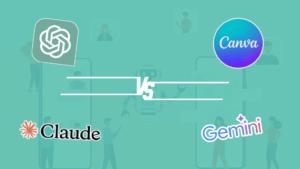Advertising is no longer about broad strokes but precise, targeted strategies that resonate with specific audiences. Artificial intelligence (AI) has become the linchpin of this transformation, enabling brands to craft and execute ad campaigns that are faster, smarter, and more impactful. From streamlining ad creation to driving cost savings and personalization, AI has unlocked a treasure trove of benefits for advertisers.
This article explores how AI enhances efficiency, improves targeting, reduces costs, scales campaigns globally, and drives personalization for better engagement and conversions.
1. Improved Efficiency and Speed in Ad Creation and Deployment
AI has revolutionized the way ads are conceptualized, created, and deployed, significantly reducing time-to-market.
How AI Drives Efficiency
Automated Content Generation: AI-powered tools like Jasper and Canva Magic Write produce ad copy, visuals, and even video content in minutes, eliminating the need for lengthy production cycles.
Streamlined Workflows: AI integrates seamlessly with platforms to automate tasks like audience segmentation, scheduling, and reporting, allowing teams to focus on strategy.
Real-Time Adjustments: AI monitors campaign performance and optimizes elements such as keywords, ad placement, and bidding strategies in real-time, ensuring peak efficiency.
Real-World Example
A retailer launching a seasonal sale can use AI to generate multiple ad variations, test their performance, and deploy the top-performing ads across platforms—all within hours. This speed is especially critical for time-sensitive campaigns.
2. Enhanced Targeting Through Data-Driven Insights
One of AI’s most powerful capabilities is its ability to analyze vast amounts of data to understand consumer behavior and preferences. This leads to highly precise targeting that drives better results.
AI-Powered Targeting Techniques
Behavioral Analysis: AI tracks user behavior, such as browsing history, purchase habits, and social media activity, to predict interests.
Lookalike Audiences: AI identifies and targets new potential customers with profiles similar to your existing customer base.
Contextual Targeting: AI ensures ads are displayed in the right context, such as placing a fitness brand’s ad on health-related articles.
Key Benefits
Higher Relevance: Ads are more aligned with user preferences, increasing click-through rates.
Reduced Ad Fatigue: By rotating ad variations and targeting specific interests, AI prevents users from seeing the same ad repeatedly.
Real-World Example
Netflix uses AI to analyze viewing habits and recommend shows. This data informs highly targeted ads for new releases, ensuring they reach the right audience.
3. Cost Savings in Media Buying and Campaign Management
AI’s ability to automate and optimize media buying translates to significant cost savings for advertisers.
How AI Reduces Costs
Programmatic Advertising: AI automates the buying and selling of ad space, reducing the need for manual intervention and enabling real-time bidding.
Budget Optimization: AI analyzes campaign performance to allocate budgets more effectively, ensuring money is spent where it generates the best ROI.
Reduced Overhead: Automated processes eliminate the need for large ad-buying teams and minimize human error.
Maximizing ROI with AI
AI’s ability to track and analyze performance ensures underperforming ads are paused, and successful ones are amplified. This continuous optimization reduces wasted spend.
Real-World Example
A travel agency running programmatic ads for flight bookings saved 30% of its budget by allowing AI to target high-intent users during peak travel planning hours.
4. Scalability for Global Campaigns with Localized Content
AI enables brands to scale their campaigns globally while ensuring content is localized to resonate with diverse audiences.
AI-Powered Localization
Language Translation: AI tools like DeepL and Google Translate adapt content into multiple languages while preserving context and tone.
Cultural Adaptation: AI analyzes local trends and consumer behavior to create culturally relevant ads.
Dynamic Content Adaptation: AI modifies visuals, messaging, and offers to suit regional preferences and regulatory requirements.
Benefits of Scalability
Consistent Brand Messaging: AI ensures campaigns maintain brand identity across markets.
Efficient Expansion: AI streamlines the process of launching campaigns in new regions, reducing time and costs.
Real-World Example
Coca-Cola used AI to adapt its global campaigns to different markets, tailoring holiday ads with region-specific visuals and messaging while maintaining the brand’s festive spirit.
5. Greater Personalization Leading to Higher Engagement and Conversion Rates
AI’s ability to deliver personalized ad experiences has redefined how brands interact with their audiences, resulting in higher engagement and conversion rates.
How AI Powers Personalization
Dynamic Creative Optimization (DCO): AI adjusts ad elements like images, headlines, and call-to-action in real-time based on user data.
Product Recommendations: AI suggests products or services based on browsing and purchase history.
Customized Messaging: AI crafts unique messages for individual users, making ads feel more personal and relevant.
Impact on Engagement and Conversions
Increased Click-Through Rates: Personalized ads capture attention more effectively than generic ones.
Improved Customer Experience: Tailored content makes users feel valued, fostering brand loyalty.
Higher Conversion Rates: Ads that align with user preferences are more likely to drive action.
Real-World Example
Amazon’s AI-driven product recommendations appear in sponsored ads, showing users items they’re most likely to purchase based on past behavior, significantly boosting sales.
Integrating AI Benefits for Maximum Impact
While each of these benefits is impactful on its own, their true potential lies in integration. AI can combine its efficiency, targeting, cost-saving, scalability, and personalization capabilities to create campaigns that are cohesive, effective, and scalable.
Steps to Leverage AI Effectively
Audit Your Current Advertising Processes: Identify areas where AI can streamline workflows or enhance performance.
Invest in the Right Tools: Choose AI platforms that align with your goals, such as Google Ads, Facebook Ads Manager, or specialized AI tools like Adobe Sensei.
Continuously Monitor Performance: Use AI to track metrics and refine campaigns in real-time.
Blend AI with Human Creativity: While AI excels at data analysis and automation, human insight is essential for crafting emotionally resonant campaigns.
Conclusion
The benefits of using AI in advertising are undeniable. From improving efficiency and speed to enhancing targeting, reducing costs, scaling campaigns globally, and driving personalization, AI empowers brands to achieve unprecedented levels of success. By integrating AI strategically, advertisers can not only optimize their campaigns but also create meaningful connections with their audiences.
As AI continues to evolve, its applications in advertising will become even more sophisticated, enabling brands to stay ahead in a rapidly changing digital landscape. For businesses willing to embrace this technology, the possibilities are endless—and the rewards are immense.
The future of advertising is here, and it’s powered by AI. Are you ready to leverage its full potential?
About The Author
Marketing Team
The AOK Marketing Team is a diverse group of amazing individuals driven to help all of our clients succeed. Great people are everywhere, and we believe that people should control their workday, their work environment, and where they live. We have team members in 9 countries: United States, Canada, Egypt, Belgium, Ireland, Australia, India, Pakistan, and Hong Kong.
How can we help you?






